An LLC, or Limited Liability Company, is a popular business structure that combines the liability protection of a corporation with the tax benefits of a partnership. When starting an LLC, it’s important to create an operating agreement, which is a legal document that outlines the ownership, management, and operating procedures of the company.
This agreement serves as a roadmap for the LLC’s operation and can help prevent disputes among members. In this article, we’ll dive deeper into what an LLC operating agreement is, why it’s important, and what it should include. We’ll also provide some tips on how to create an effective operating agreement for your LLC.
Table of Contents
LLC Operating Agreement Templates
When forming a limited liability company (LLC), having a well-drafted operating agreement is crucial for outlining the rights, responsibilities, and operational details of the company. Our LLC Operating Agreement Templates provide a comprehensive framework that allows LLC members to establish clear guidelines and rules for decision-making, profit sharing, ownership percentages, management structure, and more.
With our printable and customizable templates, you can create a tailored operating agreement that suits the unique needs of your LLC. Ensure that your business is properly structured and protected by using our templates to draft a legally binding agreement that promotes transparency, clarity, and efficient operation of your LLC. Don’t leave important business matters to chance – use our LLC Operating Agreement Templates to establish a solid foundation for your company’s success.
How LLC Operating Agreements Work

An LLC Operating Agreement is a document that outlines the internal structure of the LLC, including the rights and responsibilities of its members, the management structure of the company, and other important operational procedures. The agreement can be tailored to meet the specific needs of the LLC, and it is a crucial component of establishing a well-organized and successful business.
The agreement typically outlines the ownership percentages and voting rights of each member, as well as the distribution of profits and losses among them. It also addresses management responsibilities and decision-making processes, such as how meetings will be conducted and how major decisions will be made.
One of the key advantages of an LLC Operating Agreement is that it provides members with a level of protection against personal liability. By clearly outlining the legal structure and operations of the LLC, the agreement can help establish the company as a separate legal entity, which limits the personal liability of its members.
It’s important to note that an LLC Operating Agreement is a legal document, and it’s typically filed with the state in which the LLC is registered. The agreement should be reviewed and updated periodically to ensure that it remains accurate and relevant to the needs of the LLC. Overall, an LLC Operating Agreement is a critical tool for organizing and protecting the interests of the LLC and its members.
Benefits of an LLC Operating Agreement
There are several benefits to having an LLC Operating Agreement in place for your limited liability company. Here are some of the key advantages:
Customization: An LLC Operating Agreement can be customized to meet the specific needs and goals of the business and its members. This flexibility allows the LLC to set its own rules and procedures that best suit its unique situation.
Clarity: The Operating Agreement provides clarity on how the LLC will be managed, including decision-making processes, member rights and responsibilities, profit and loss distribution, and more. This clarity can help prevent disputes and misunderstandings among members and can provide a roadmap for future decision-making.
Legal protection: An LLC Operating Agreement can help protect the LLC and its members from personal liability in the event of a lawsuit or other legal action. By clearly outlining the legal structure and operations of the LLC, the agreement can help establish the company as a separate legal entity, which limits the personal liability of its members.
Credibility: Having an LLC Operating Agreement in place can add credibility to the business in the eyes of investors, lenders, and other stakeholders. It shows that the LLC is well-organized and has a clear plan for success.
Tax benefits: An LLC Operating Agreement can provide tax benefits for the LLC and its members. By defining the distribution of profits and losses among members, the agreement can help ensure that the LLC is taxed as a pass-through entity, which can result in lower taxes for individual members.
Overall, an LLC Operating Agreement is an essential document for any limited liability company. It can provide a range of benefits, including customization, clarity, legal protection, credibility, and tax benefits. It is an investment in the long-term success and stability of the LLC.
What to Include in an LLC Operating Agreement
An LLC operating agreement is a legal document that outlines how an LLC will be managed and operated. Here are some key items that should be included in an LLC operating agreement:
Company Purpose: Clearly state the purpose of the LLC and the activities that it will engage in.
Members: Identify the members of the LLC, including their names, addresses, and the amount of their ownership interest in the LLC.
Management: Describe how the LLC will be managed. Will it be member-managed or manager-managed? If it’s manager-managed, then identify the manager(s) and their duties and responsibilities.
Voting Rights: Specify the voting rights of the members and how decisions will be made. Will it be by majority vote, unanimous consent, or another method?
Profits and Losses: Outline how profits and losses will be allocated among the members.
Capital Contributions: Describe the amount and nature of the initial capital contributions made by each member, as well as any additional capital contributions that may be required in the future.
Distributions: Explain how distributions will be made to the members.
Transfer of Membership Interests: Discuss the restrictions on the transfer of membership interests and the process for approving any transfers.
Dissolution: Explain the process for dissolving the LLC, including how the assets will be distributed among the members.
Dispute Resolution: Describe the process for resolving disputes among the members.
It’s important to note that an LLC operating agreement is a legal document, and it’s recommended that you seek the advice of a lawyer to help you create one that’s tailored to your specific needs and requirements.
What factors should an LLC consider when determining which actions require unanimous consent from its members, and which actions can be taken by a simple majority vote?
An LLC may require unanimous consent on some actions because they are considered to be significant or fundamental to the operation and management of the LLC. These actions may include, but are not limited to:
Amending the operating agreement: Any changes to the operating agreement could potentially affect the rights and obligations of the members, and therefore, require unanimous consent.
Adding or removing members: Adding or removing members can impact the ownership and management structure of the LLC, and thus require unanimous consent.
Dissolving the LLC: This is a significant action that can impact the financial and legal obligations of the members, and therefore, may require unanimous consent.
Selling or transferring assets: This may impact the financial status and ownership of the LLC, and thus require unanimous consent.
On the other hand, an LLC may not require unanimous consent on other actions that are considered to be less significant or routine in nature. These actions may include:
Routine business decisions: These may include day-to-day operations, such as purchasing supplies or hiring employees.
Simple majority votes: Certain decisions may be made by a simple majority vote of the members, such as routine financial decisions or changes to the LLC’s address.
Ultimately, the specific actions that require unanimous consent versus those that do not will depend on the unique circumstances and needs of the LLC, and will be outlined in the LLC’s operating agreement.
How to draft an LLC operating agreement
An LLC operating agreement is a legal document that outlines the ownership structure, management, and operating procedures of a limited liability company (LLC). It is a crucial document for any LLC as it governs how the business will be run and helps to avoid disputes among members. In this step-by-step guide, we will walk you through the process of drafting an LLC operating agreement.
Step 1: Understand the Purpose of an LLC Operating Agreement
Before you begin drafting an LLC operating agreement, you need to understand its purpose. An LLC operating agreement outlines the rights and responsibilities of each member of the LLC. It also specifies how profits and losses will be shared among members and how the business will be managed.
Step 2: Identify the Members of the LLC
The first step in drafting an LLC operating agreement is to identify all the members of the LLC. This includes the names, addresses, and percentage ownership of each member. It is important to have this information as it will be used to determine each member’s voting rights and share of profits and losses.
Step 3: Determine the Management Structure
The management structure of an LLC can be either member-managed or manager-managed. In a member-managed LLC, all members have the right to participate in the management of the business. In a manager-managed LLC, one or more members are designated to manage the business. It is important to specify the management structure in the operating agreement.
Step 4: Specify Voting Rights
Voting rights determine how decisions will be made within the LLC. It is important to specify the voting rights of each member in the operating agreement. This includes how many votes each member has and what percentage of votes is needed to make decisions.
Step 5: Define Profit and Loss Allocation
Profit and loss allocation specify how profits and losses will be divided among members. It is important to specify the percentage of profits and losses that each member is entitled to receive. This will ensure that each member receives a fair share of the profits and losses.
Step 6: Specify Capital Contributions
Capital contributions are the amount of money or assets that each member contributes to the LLC. It is important to specify the amount of capital that each member has contributed and how new capital contributions will be handled.
Step 7: Outline Transfer Restrictions
Transfer restrictions determine how ownership interests in the LLC can be transferred. It is important to specify any restrictions on the transfer of ownership interests, including the right of first refusal and buyout provisions.
Step 8: Address Dissolution and Termination
Dissolution and termination provisions outline the process for dissolving and terminating the LLC. It is important to specify the circumstances under which the LLC may be dissolved and the procedures for winding up the business.
Step 9: Address Additional Provisions
Additional provisions may be included in the LLC operating agreement. These may include restrictions on competition, confidentiality agreements, and dispute resolution procedures. It is important to carefully consider any additional provisions that may be relevant to the LLC.
Step 10: Review and Finalize the Operating Agreement
Once you have drafted the LLC operating agreement, it is important to review it carefully to ensure that it accurately reflects the agreements of all members. You may also want to have an attorney review the operating agreement to ensure that it complies with all state laws and regulations. Once the operating agreement is finalized, all members should sign it to indicate their agreement.
FAQs
Is an LLC operating agreement required by law?’
While an LLC operating agreement is not required by law in most states, it is highly recommended that LLCs have one in place. In the absence of an operating agreement, the LLC will be subject to the default rules of the state where it is formed, which may not reflect the intentions of the members.
Who should create an LLC operating agreement?
An LLC operating agreement can be created by the members of the LLC or by a lawyer. While it is possible to create an operating agreement without the assistance of a lawyer, it is recommended that you seek legal advice to ensure that the agreement is comprehensive and legally enforceable.
Can an LLC operating agreement be amended?
Yes, an LLC operating agreement can be amended, provided that the members of the LLC agree to the changes. The process for amending the operating agreement should be outlined in the original agreement.
Is an LLC operating agreement the same as articles of organization?
No, an LLC operating agreement and articles of organization are two separate documents. Articles of organization are filed with the state and establish the existence of the LLC, while an LLC operating agreement is an internal document that outlines the management and operation of the LLC.
Can an LLC have more than one operating agreement?
While an LLC can technically have multiple operating agreements, it is generally not recommended as it can cause confusion and potential conflicts among members. If changes to the LLC’s management or structure are needed, it is best to amend the existing operating agreement rather than creating a new one.
What is the difference between member-managed and manager-managed LLCs?
Member-managed LLCs are managed by the members of the LLC, who have the authority to make decisions and run the business. In a manager-managed LLC, the members appoint one or more managers to run the day-to-day operations of the LLC. The decision between a member-managed or manager-managed LLC should be outlined in the operating agreement.
How are profits and losses allocated in an LLC?
In an LLC, profits and losses are typically allocated to the members based on their percentage ownership in the LLC, as outlined in the operating agreement. Alternatively, the LLC may choose to allocate profits and losses based on another agreed-upon method.
What happens if a member wants to leave the LLC?
The process for a member leaving an LLC should be outlined in the operating agreement. Typically, a member must provide written notice of their intent to withdraw and the LLC must pay out their share of the company’s assets.
What is the process for dissolving an LLC?
The process for dissolving an LLC should be outlined in the operating agreement. Generally, the members must agree to dissolve the LLC and follow the process for winding down the company’s affairs, paying off debts and obligations, and distributing remaining assets.
Can an LLC have different classes of membership?
Yes, an LLC can have different classes of membership, each with its own rights, privileges, and obligations. The operating agreement should outline the different classes of membership and their respective rights and responsibilities.
Can an LLC operating agreement be enforced in court?
Yes, an LLC operating agreement can be enforced in court if it is properly drafted and executed. However, if the operating agreement conflicts with state law, it may not be enforceable. It is recommended that you seek legal advice when drafting an operating agreement to ensure that it is legally sound and enforceable.




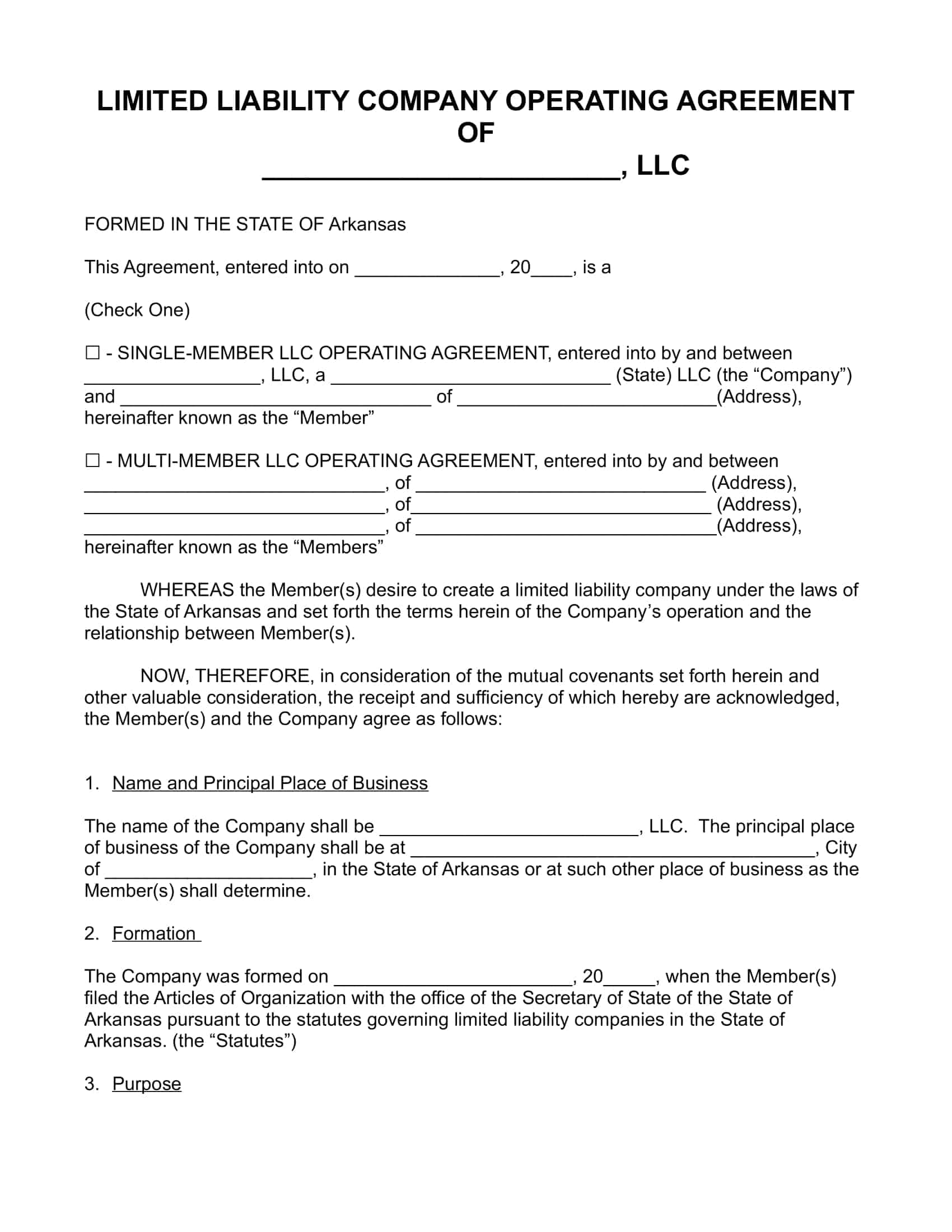




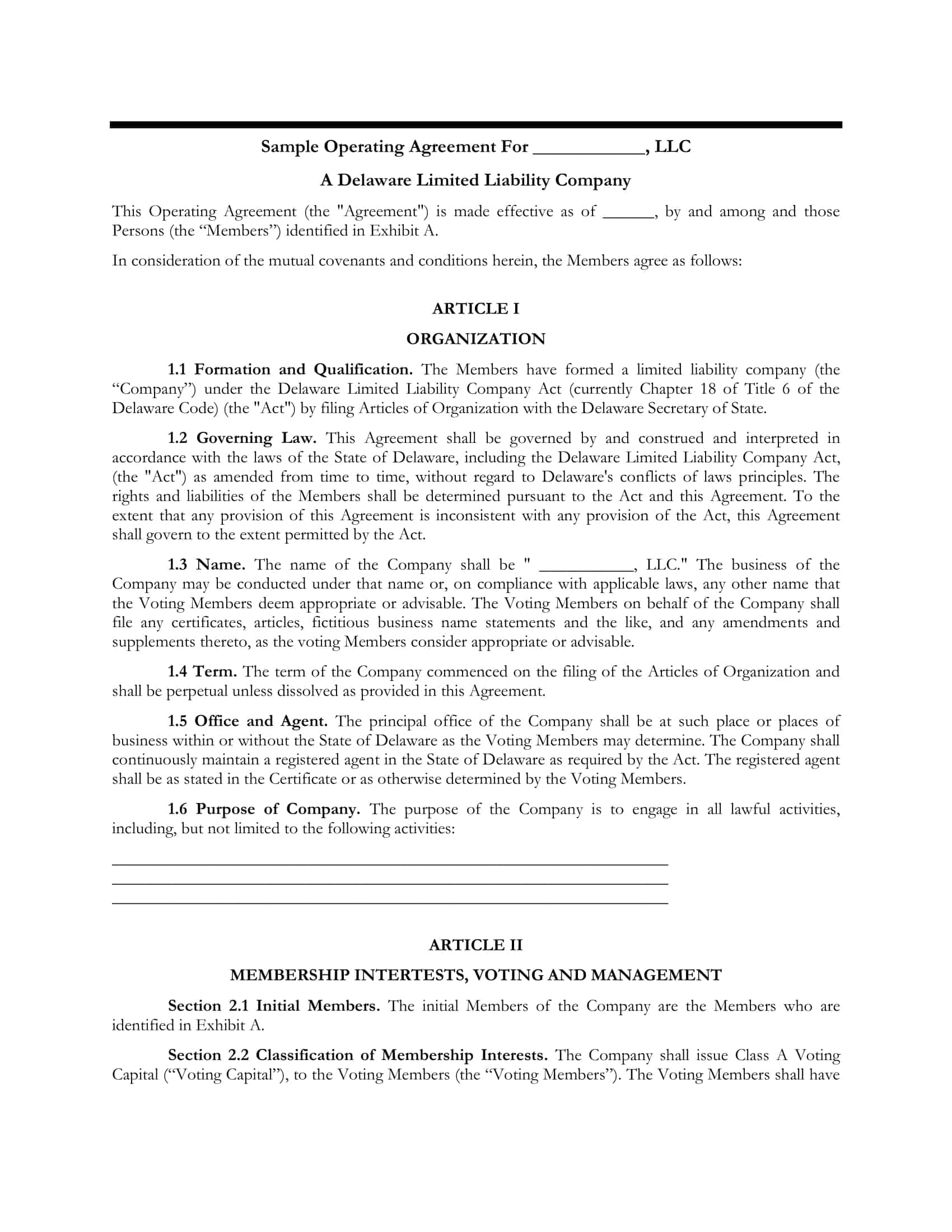

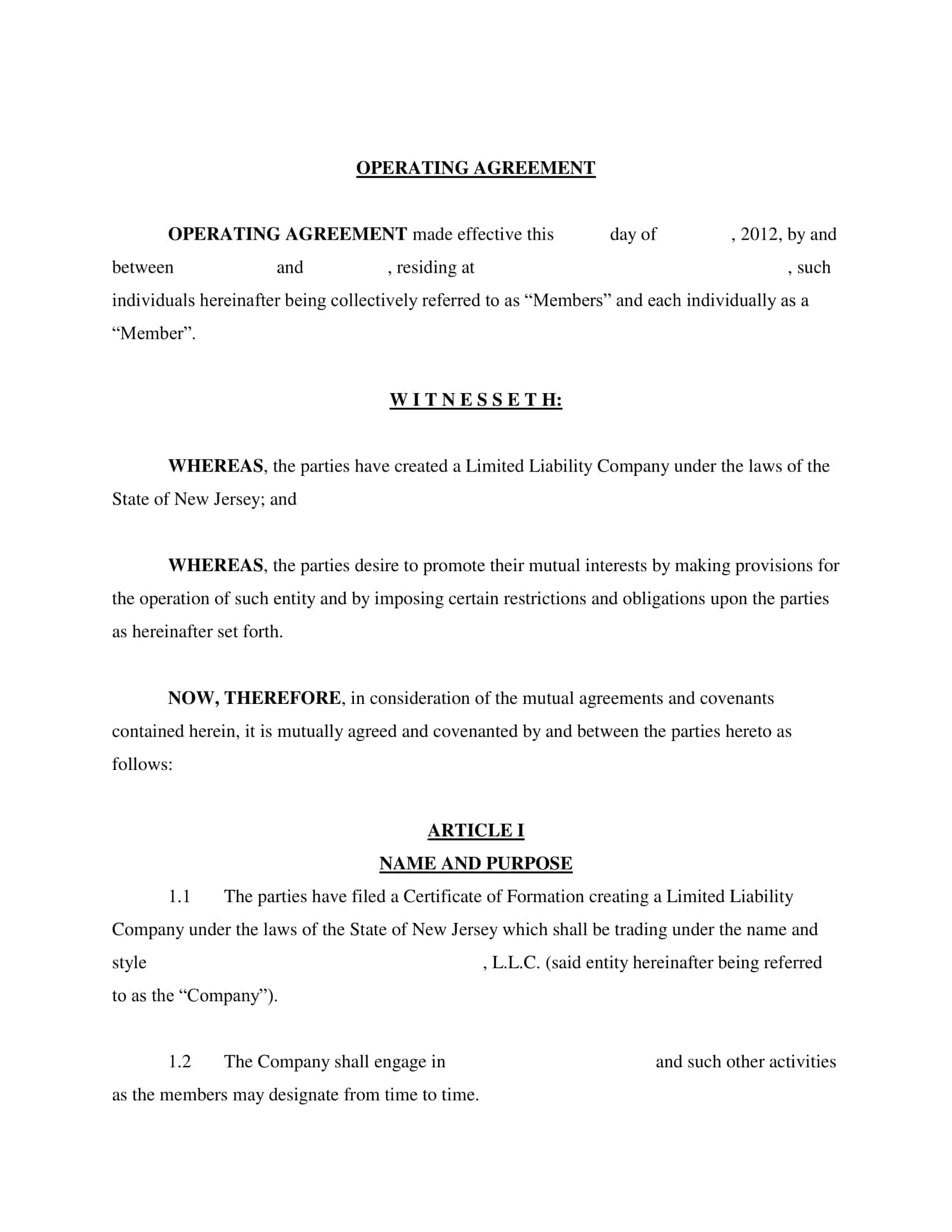

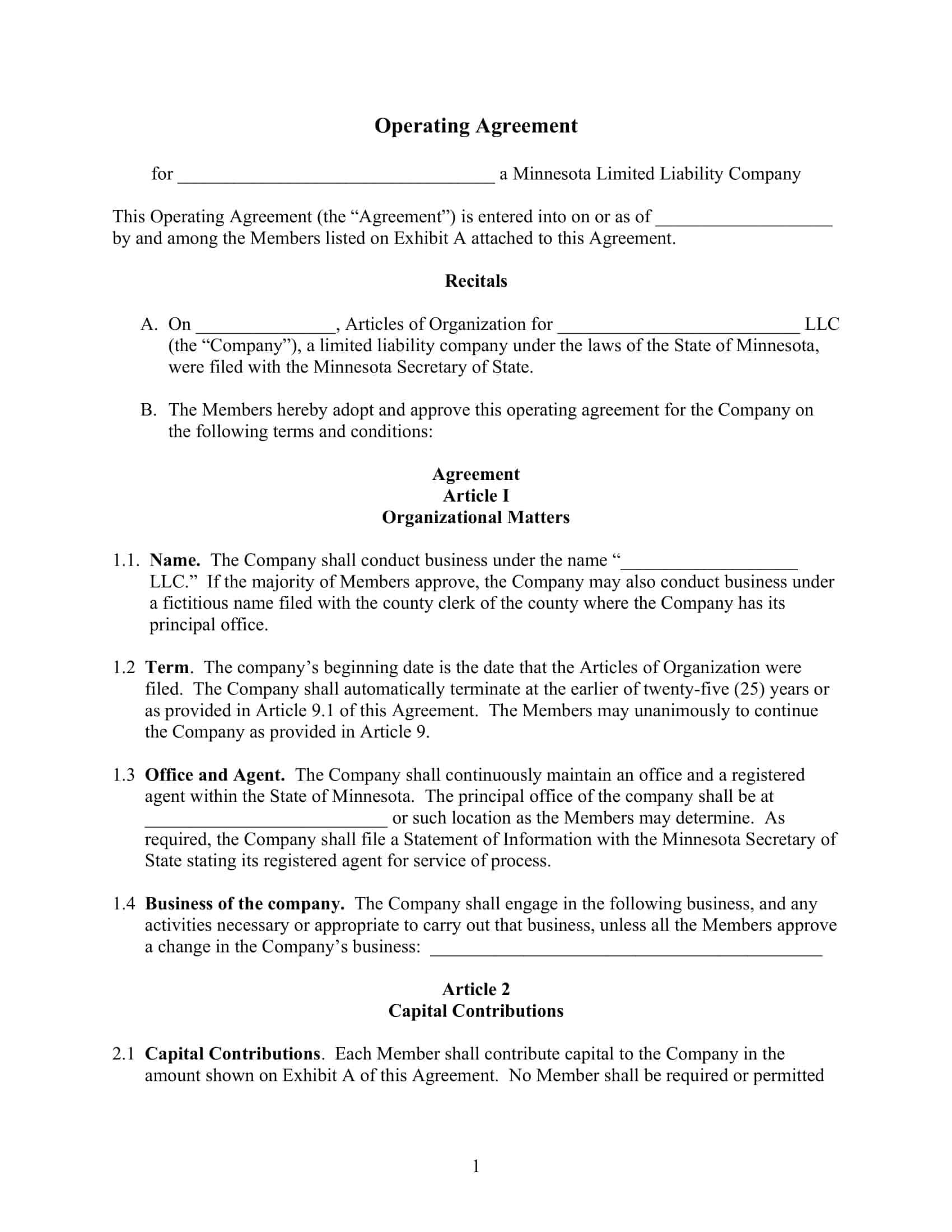

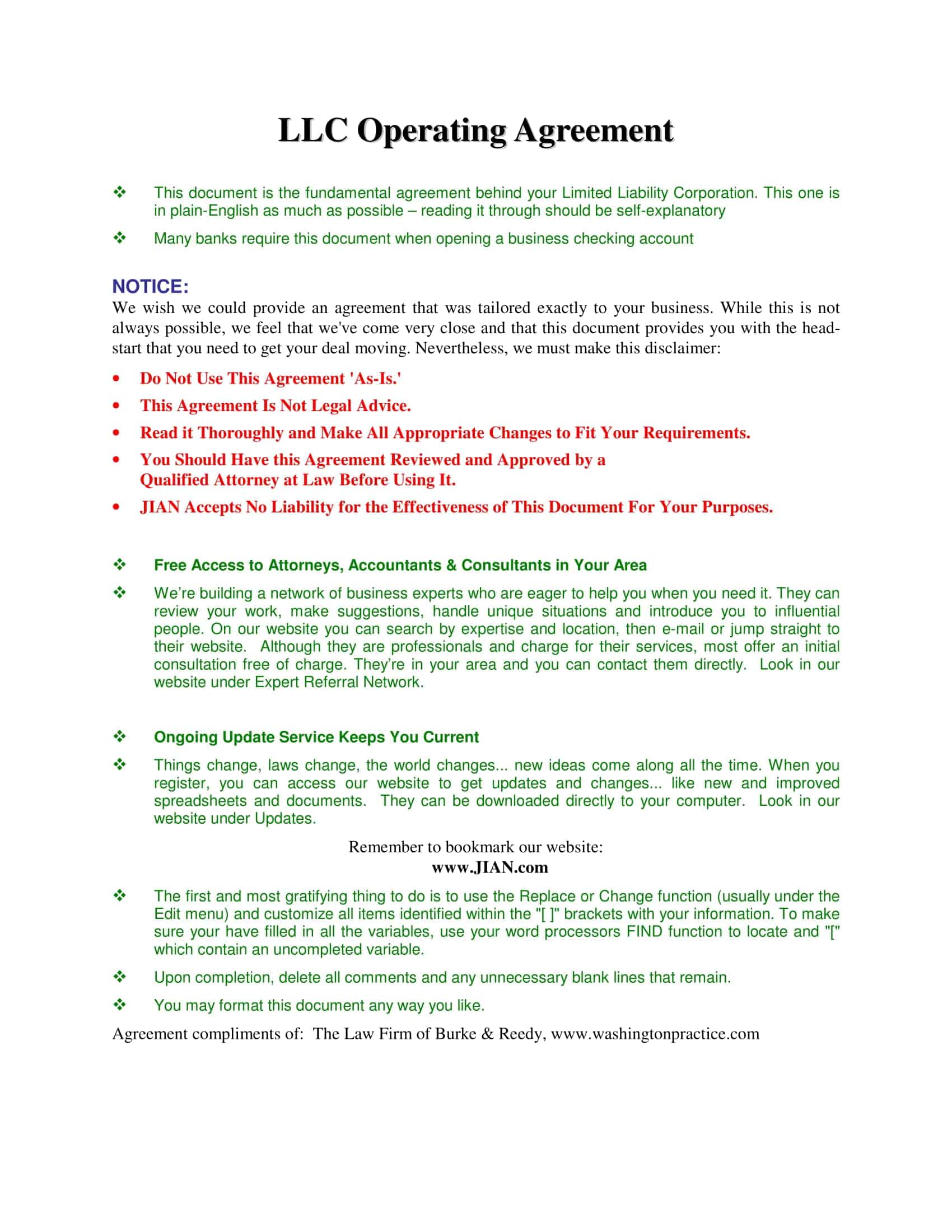












![Free Printable Roommate Agreement Templates [Word, PDF] 1 Roommate Agreement](https://www.typecalendar.com/wp-content/uploads/2023/06/Roommate-Agreement-150x150.jpg)
![Free Printable Payment Agreement Templates [PDF, Word] 2 Payment Agreement](https://www.typecalendar.com/wp-content/uploads/2023/05/Payment-Agreement-1-150x150.jpg)
![Free Printable Separation Agreement Templates [PDF, Word] 3 Separation Agreement](https://www.typecalendar.com/wp-content/uploads/2023/05/Separation-Agreement-1-150x150.jpg)
